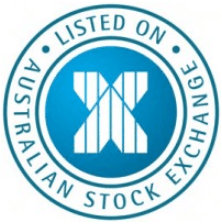Chris Weston, Chief Market Strategist at IG Markets
Asian indices and other futures markets have got off to quiet start in what is shaping up to be a very interesting week for a number of closely watched macro themes.
Naturally, developments between Russia and the Ukraine will be in the cross sights. However, despite more concerning rhetoric that tensions are nearing a point of no return, we haven’t really seen a heavy bias towards defensive trading strategies today.
China has dominated the local news front, with the official manufacturing PMI falling 60 basis points to 51.1, while the HSBC PMI print was revised slightly lower to 50.2. If you go back to March, when we started to see more targeted measures feeding through into the economy, the reaction in manufacturing has been fairly clear. Despite today’s slower pace of expansion, the longer-term trend is still in an upwards trajectory. Looking at moves following the targeted stimulus measures announced after June 2013, we started to see the official index head lower after five months of stimulus – this seems to be playing out this time as well.
The fact we have seen a limited reaction to the PMI data in the China CSI 300 and CME copper suggests that today’s economic data print will not derail the 7.5% growth target.
There has also been a limited reaction in the AUD and ASX 200, with the AUD having to deal with a 50 basis point upside beat on Australia Q2 inventories (at 0.8%). This suggests Thursday’s Q2 GDP should remain in positive territory, despite calls from one investment house for a contraction as much as 0.4%. Company profits fell 6.9%, although the AUD is looking much more closely at other factors. In fact, unless the RBA alters its view and expresses a more concerning outlook, which is unlikely, then the capital angle will be the main reason traders own the AUD.
Sell rallies in EUR crosses
The carry trade is alive and well. And what’s more, there are some clear but perhaps stretched trends as well. The question, then, is what currency you use to fund the trade. Looking at price action in EUR/AUD, EUR/NZD and EUR/CAD, the easy answer is the EUR. The JPY has actually been pushed out to third place here (behind EUR and CHF), especially as the Swiss ten-year treasury actually yields less than Japan. In Europe, we’re actually seeing negative yields in Germany out to maturities of four year, while EONIA (the European effective overnight interest rate) went negative for the first time ever on Thursday, although had a good bounce on Friday to ten basis points.
There is no doubt that Europe is having huge ramifications on the capital markets – the question is have markets got too excited by Mario Draghi’s Jackson Hole comments? Draghi told the market they are looking at inflation expectations (using the swaps market). However, five-year inflation expectations have moved from around 1.94% last week to 2.01%. European bonds and the EUR have naturally moved lower in line with market expectations, but what the central bank actually does this week is the subject of strong debate.
My guess is we are likely to get a rate cut, taking all three (the lending, refinancing and deposit) down by ten basis points. This would take the deposit rate to negative 20 basis and, given there is talk that a number of Dutch banks have already moved funds away from the ECB’s balance sheet, a further cut could have deeper ramifications. In some ways this could already explain the moves in EUR/GBP as it looks to break the 79 handle again. One would think that other European banks will be eyeing the more attractive balance sheet of the Bank of England if the ECB cut to negative 20 basis points.
Little chance of QE being announced this week
I see little chance of the ECB announcing full-blown QE this week. If this comes, it will come in the latter stages of 2015. Certainly, we face the age-old battle of German budgetary prudence – comments from Wolfgang Schaeuble have suggested that pushing through a bond purchase program while certain countries continue to push back on fiscal targets is a tough task. It’s unlikely that it will offer a lasting solution to the low inflation problem even if it is announced, given the market will see this program as limited in nature.
There is a chance the ECB announces an asset-backed security program this week. However, given they have only just asked for Blackrock’s assistance, my bias is that this will be implemented in the latter stages of Q4.
As things stand, we should see a flat open in Europe and, although we saw good outperformance from European equities last week, we could see apprehension creep in this week. European banking stocks have enjoyed a good run – and rightly so; the ECB are effectively using them as their mechanism for credit supply. The Eurostoxx 600 banking sector has already rallied nearly 9% since August 8 and I would continue to expect this trade to work over the coming weeks.
